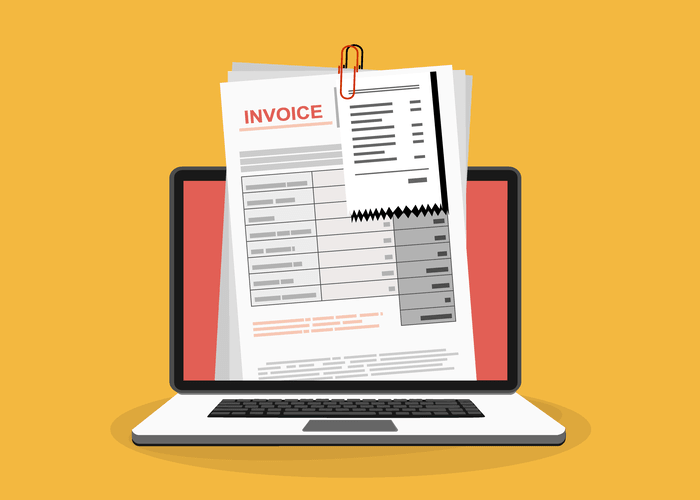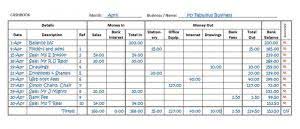.jpg)
The accounts which are to be debited and credited are determined by adhering to golden rules of accounting which are prescribed for journalizing. Each accounting entry must be supported by a narration which describes in brief the nature of the transaction recorded. All accounting entries are sequentially recorded for the first time in the journal through accounting entries.
This level of detail makes the journal a valuable source for auditing and analysis purposes, as it provides a comprehensive record of the financial activities of a business. The main difference between journals and ledgers comes down to ease of use and accessibility. Journals are typically used by individuals or small businesses who only have a few accounts and don’t need to track lots of detailed information. Ledgers are better for larger businesses who need to see an overview of all their accounts at once, or for tracking specific information such as inventory or customer payments. A journal is the primary book of accounts where all financial transactions are first recorded in chronological order before being posted to the ledger.
Types of Journals
.jpg)
A ledger is the principal book of accounts that organizes financial transactions according to account. Once transactions are recorded in the journal, they are transferred (posted) to the ledger under appropriate headings like cash, sales, purchases, etc. Once transactions are journalized and posted correctly, a trail balance can be prepared and true and fair financial statements can be drawn up.
- The posting process may take place quite frequently, or could be as infrequent as the end of each reporting period.
- In the double-entry bookkeeping method, financial transactions are initially recorded in the journal.
- Understanding the differences between journal and ledger is essential for maintaining accurate and systematic financial records, which are vital for informed decision-making and financial reporting.
- The journal captures the detailed transactional information, facilitates error identification and correction, and serves as a reference for posting entries to the ledger.
- Once a transaction is posted in a general journal, the next step is to classify the transactions based on the accounts they affect.
- However, if we compare, we would see that the journal is more critical than the ledger; if there is an error in the journal, it would be tough to find out since it is the book of original entry.
Journals and Ledgers also determine the profit or loss statement of the company and indicate financial liabilities (if any). It is also necessary for tracking financial operations and helps in the smooth functioning of a company. One of the key attributes of the journal is its ability to capture the complete transactional details. It includes information such as the accounts involved, the specific amounts debited or credited, and any additional notes or explanations.
What exactly is the difference between a journal and a ledger in accounting?
The set of real, personal and nominal accounts where account wise description is recorded, it is known as Ledger. This article looks at meaning of and differences between two basic types of books of accounts – journal and ledger. The ledger shows the account’s opening balance, all debits and credits to the account for the period, and the ending balance. The bookkeeper typically places the account title at the top of the “T” and records debit entries on the left side and credit entries on the right. The general ledger sometimes displays additional columns for particulars, such as transaction description, date, and serial number. Journals serve as the initial record of transactions, ensuring accuracy and completeness.
- The information in the ledger is the highest level of information aggregation, from which trial balances and financial statements are produced.
- The main difference between Journal and Ledger is that the Journal keeps a track of buying and selling of products by making daily entries.
- A journal is a chronological record of financial transactions, while a ledger is a compilation of all the balances in each account.
- The general journal records raw, date-sequenced transactions, while the general ledger organizes these transactions into key categories, including assets, liabilities, and revenues.
- Together, the journal and the ledger form a robust system for maintaining accurate financial records, ensuring the integrity of financial information, and supporting informed decision-making.
- The Journal is a subsidiary book for maintaining the daily accounts of a company.
- Overall, the integration of technology has streamlined the financial record-keeping process, reducing manual labor and improving efficiency.
Similarities between Journal and Ledger
In a computerized accounting system, the concepts of journals and ledgers may not even be used. In a smaller organization, users may believe that all of their business transactions are being recorded in the general ledger, with no storage of information in a journal. Companies with massive transaction volume may still use systems that require the segregation of information into journals. Thus, the concepts are somewhat muddied in a computerized environment, but still hold true in a manual bookkeeping environment. While posting entries in the ledger, individual accounts should be opened for each account. The format of a ledger account is ‘T’ shaped having two sides debit and credit.
What is the approximate value of your cash savings and other investments?
Accountants can keep a record of the opening and closing entries in a journal. Each Journal entry is accompanied by a valid reason for the money transaction. Comparisons may contain inaccurate information about people, places, or facts. We follow strict ethical journalism practices, which includes presenting unbiased information and citing reliable, attributed resources. 11 Financial may only transact business in those states in which it is registered, or qualifies for an exemption or exclusion from registration requirements.
Types of Ledger
This forms the base for preparing the financial statements such as profit and loss account and balance sheet. A journal and ledger are two types of books that are routinely used in the process of accounting. Considered key to what is known as what is the difference between a journal and a ledger double entry accounting, each of these books serves specific purposes within the overall process of keeping accurate financial records. While many of the transactions posted in both these books are the same, there are key differences in the purpose and function of each of these accounting books.
Both the journal and ledger play distinct yet complementary roles in the accounting process. While the journal serves as the starting point for recording financial transactions, the ledger organizes these entries into individual accounts, providing a detailed overview of a company’s financial position. Understanding the differences between journal and ledger is essential for maintaining accurate and systematic financial records, which are vital for informed decision-making and financial reporting. In accounting and finance, a journal is a chronological record of all financial transactions of a business. It serves as the first step in the double-entry bookkeeping system, where transactions are initially recorded before being transferred to ledger accounts. The differences between journal and ledger are essential to understanding the basics of accounting.









